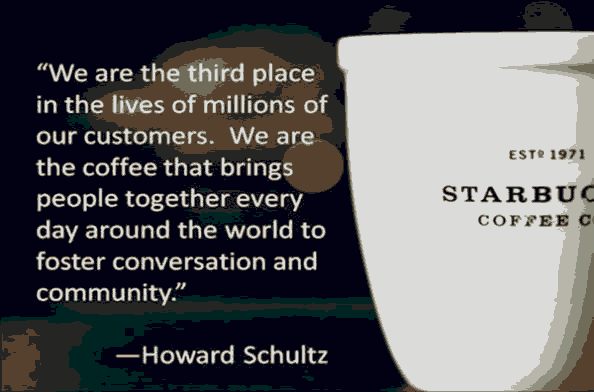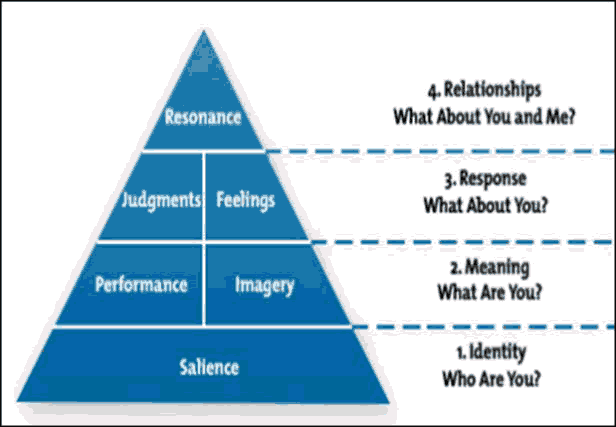Research Article: 2021 Vol: 24 Issue: 1S
Brand Tribalism: A Marketing Tool from the Believers
Pathompong Bumrerb, Dhonburi Rajabhat University
Keywords
Brand Tribalism, Brand Loyalty, Customer Behavior
Abstract
Since digital technology has completely changed the marketing landscape, old marketing tools and strategies seem to be ineffective. Customers are less tolerant and impatient with unsatisfied products from a brand. To survive this situation and conquer a market, when customer loyalty is not real in the digital world, a marketer needs something miraculous to win customers’ hearts and create a bond deepest down in their soul. Brand tribalism has emerged for that reason. A brand tribe can be a representative of a group of people who collectively identify themselves with the product and share similar attitudes and viewpoints about the brand. Brand tribalism is composed of five elements: 1) degree of fit with lifestyle, 2) passion in life, 3) reference group acceptance, 4) social visibility of the brand, and 5) sharing of collective memory.
Introduction
In order to make a consumer feel different about the product, a marketer needs to add value to the product by branding it. A brand is not just a mark or a symbol. It includes everything about the quality and taste of the product, packaging characteristics, marketing activities, unique selling propositions, and reputation. Branding is one of the most powerful marketing tools, which not only concentrates on a marketing mix, but also covers the activation of a value-add that is unique and incomparable to any competitor toward a customer. To make an impactful strategy, a brand must be concerned about how to put together a brand image and a brand core consumer perception in order to achieve the highest return on investment through analyzing, formulating, and implementing a strategy that best satisfies stakeholders (Robert, 2012). To build a sustainable brand equity, a marketer should carefully study consumer behavior and perception (Bumrerb, 2015) because a good brand can persuade consumer decision making and the benefit will be for the company that owns the brand. In 2002, the first idea concept of brand tribalism was created by Cova & Cova (2002). The purpose of brand tribalism is to identify a community of self-selected individuals formed based on an emotional attachment to a product or brand. Brand tribalism is derived from the concept of brand community. Brand tribalism may be defined as a community or subculture of consumers formed through an emotional bond to a product or brand (Jurisic & Azevedo, 2011). Although members of the tribe do not need to accept a membership (Taute& Sierra, 2014), they have to build a co-value and customize a market offering for a network (Loureiro & Kaufmann, 2016).
The importance of brand tribalism to a marketer and a brand is that a member of the tribe always supports all products from the brand, even if they are in the middle of an economic crisis or any other worst situation.
This is consistent with the research results about brand experience, brand tribalism, and brand advocacy of Khamwon & Pongsuraton (2020), which indicated that brand experience has a direct and indirect influence on brand advocacy through brand tribalism and that all brand advocates will condition themselves to support the brand over their lifetime. Brand tribalism is the best marketing tool with low operational costs in modern times (Byunghwa, 2020). The appropriate use of brand tribalism as a marketing tool can enhance brand equity and increase the value of the company that owns the brand in the market. Brand tribalism makes a brand that is intangible become tangible and salable, like Apple, which is the world’s second most valuable brand in the Kantar BrandZ Top 100 Most Valuable Global Brands 2021, with an estimated value of $612 billion in 2021, compared to a competitor like Xiaomi, which ranked 70th $24.8 billion (Faulconbridge & Makori, 2021).
A Definition of ‘Brand’
What is a brand? According to the American Marketing Association, a brand is a name, term, design, symbol, or any other feature that identifies one seller’s good or service as distinct from those of other sellers (Marion, 2018). A brand is one of the important keys to making competitive advantage and keeping the company that owns the brand survive in the market (Kotler & Keller, 2016). In addition to sales volume, market share, and revenue, a good brand with strong brand equity can also create job satisfaction with exceptional value for the employer (Tajpour et al., 2021).
A Definition of ‘Tribe’
The Cambridge Dictionary defined a tribe as a group of people, often of related families, who live together, sharing the same language, culture, and history, especially those who do not live in towns or cities (Dictionary.cambridge.org, 2018).
Power of a Tribe
Turning a tribe into an institution is a process by which social structures arise and exist. Role groups that have become institutions are integrated into a social system (Rucker, Galinsky & Dubois, 2012). When any social system is a large system, there are many different institutions in the mix. Each institution is called a human society subsystem that can form a large system of interrelated institutions. According to the findings of Falahat, et al., (2018), who studied brand loyalty and determinants of perceived quality and willingness to order, perceived quality and willingness to order can explain brand loyalty, but superior perception of quality is not only derived from price, distribution image, and advertising, but also from brand association within the members of the brand, which is a key driver of perceived quality. It means that communication among members of the tribe has a greater influence on perceived quality and willingness to order than price, distribution image, and advertising.
A Definition of ‘Brand Tribalism’
A brand tribe could be regarded as a group of people who collectively identify themselves with the product and share similar views and notions about the brand (The Economic Times India, 2019). They are not just consumers of the product, but play a major role in its promotion (The Economic Times India, 2018). According to Ruined & Wallace (2015), there is evidence from online tribes and communities showing that a consumer has more loyalty to the tribe to which they belong than to a brand represented (Sierra et al., 2016). This is consistent with (Khadim et al., 2018), who revisited the antecedents of brand loyalty and the impact of perceived social media communication with brand trust and brand equity as mediators and found that the trendiness, customization, and word-of-mouth of social media marketing in the online tribes and communities directly influence brand loyalty and indirectly influence brand equity.
A Composition of ‘Brand Tribalism’
According to Jurisic & Azevedo (2010); Loureiro (2013), brand tribalism is composed of 5 elements as follows.
1. Degree of fit with lifestyle: for example, Land Rover matches its brand identity with customers’ lifestyle by highlighting an outrageous luxury adventure and a splurge experience, as shown in Figure 1
2. Passion in Life: a good brand must give an extraordinary value that no one else can do, like Land Rover brings luxury to adventure travel, as presented in Figure 2
3. Reference group acceptance is the acceptance of brand related activities among members of the reference group. For example, the Land Rover Club has an activity that allows only members who drive Land Rover cars to join.
4. Social visibility of the brand: for example, everybody knows what Land Rover cars are and how much of a difference they make among other cars and can also automatically recognizes Land Rover’s true brand value.
5. Collective memory is when consumers have knowledge of a brand and share that knowledge with other members of the group and when they buy products, they consider the brand that a member of the group bought first (Veloutsou & Moutinho, 2009).
Brand Community
The term "brand community" was introduced by Albert Muniz Jr. and Thomas C. O'Guinn in a 1995 paper for the Association for Consumer Research Annual Conference in Minneapolis, Minnesota. In a 2001 article titled "Brand community," published in the Journal of Consumer Research (SSCI), brand community was defined as "a specialized, non-geographically bound community, based on a structured set of social relations among admirers of a brand" (Wikipedia, 2020). Building a brand community is not an easy task, but it is seriously beneficial if companies can include it within a marketing strategy (Vivid Brand, 2018). In order to build a brand community, a company must build a bond between brand and customers with a unique brand personality and value (Vivid Brand, 2018). For example, in order to make its customer feel the difference, Starbucks sent them a message that "This is a third place where you can spend comfort time, chilling, except your home and office," as shown in Figure 3.
Connections between Brand Tribalism and Brand Community
A notable mention of brand tribalism comes from a brand community when customers stick together and share their feelings, experiences, rituals, and traditions through the brand, resulting in the power of the tribe. One of the most powerful marketing tools that comes from the power of the tribe is World Nutella Day. Every year on the 5th of February, all members of the tribe are invited to share love and devotion to the Nutella brand they love (Nutelladay.com, 2020). This is consistent with the study of Azizan & Yusr (2019), who investigated the influence of customer satisfaction, brand trust, and brand image on customer loyalty. Their research results showed that customer satisfaction, brand trust, and brand image have a significant positive influence on customer loyalty. Therefore, the best way to retain and enhance customer loyalty is to spread positive word of mouth about satisfaction, brand trust, and brand image among the customers in the brand community by using brand tribalism.
Differences between Brand Tribalism and Brand Community
Although brand tribalism and brand community appear to be similar, there are several differences as follows.
1) Brand tribalism is more focused on relationships among members or customers.
2) Brand community is centered on the brand or products.
3) Brand tribalism has a prophet, an apostle, and a ritual.
4) Brand tribalism has a sense of entrepreneurship, which probably has an influence on consumers’ attitudes towards the market.
Connections between Brands Equity and Brand Tribalism
Hayeemad, et al., (2015), who studied brand tribalism, brand relationships, and halal brand equity in Muslim consumers, revealed that brand tribalism has both direct and indirect effect on brand equity, while brand relationships act as a mediator of the indirect effect. Tsiotsou (2013), who examined the effect of brand relationships and tribal behavior on brand loyalty in Southern Europe, indicated that consumer-brand relationships affect consumers’ tribal behavior and consumers’ tribal behavior affects brand loyalty. Thus, it can be said that building a brand tribe is part of creating brand value.
How to Make an Apostle: Brand Resonance
According to Keller’s Brand Equity Model shown in Figure 4, there are four steps to build a powerful brand.
1) Salience: find the real identity of the brand.
2) Performance/imagery: find the real meaning of your brand.
3) Judgment: figure out what your customers think about your brand.
4) Resonance: understand the relationships between your brand and customers.
As can be seen, resonance or relationship is on the top of the pyramid. If you can practically apply the concept of brand tribalism, that mean you are an apex predator in the market.
Advantages of Brand Tribalism
1) The brand philosophy has become the philosophy of the members of the tribe. For example, the philosophy of Mossino “Cheap & Chic” is represented by a unique “Cheap & Chic” style of the members of the tribe.
2) A brand tribe can be globalized, regardless of race, religion, or geographical location. It is created with a single self-identity through the collective efforts of all tribe members.
3) It is easier to build loyalty among tribe members than to acquire a new one.
4) The biggest advantage is in terms of brand extensions, because tribe members will always be willing to buy a new product from the brand.
A Digital Narrative when the Customers Lose their Fate
Y&R Thailand carried out the BAV 2018 research by using a quantitative method to collect questionnaire data from 13,380 Thai people aged between 18-65 years old in order to survey customer opinion towards 1,220 brands covering 120 categories of products and services. The research results showed that Thai consumers feel it is easier to access brands. However, they feel that their brand loyalty is down from 85% to 77% (Y&R Thailand, 2018) because the digital age brings more communication channels between brands and customers. Many brands have lost their real identity because they are chasing a cheating hope from digital phenomena, social viral campaigns, youtubers, and social media influencers.
Too Much Focus on Brands Loyalty is the Cause of Brands Destruction
The airline industry was the first to implement a brand loyalty program. In the 80's, there were so many errors and mistakes in the mile earning program. A customer could get 120,000 miles from buying 12,000 cups of pudding due to a few missteps. Later, in the 90's, many businesses woke up from a slumber of loyalty programs and that marked the beginning of customer relationship programs. Millennials do not trust loyalty programs. They think that the loyalty program has too many terms and conditions and feel uncomfortable binding themselves with any brand.
Conclusion
Everybody knows that brands equity is one of the primary keys to the success of a brand, but not every marketer can create an extraordinary magic of brand equity. In today’s digital world, people from all parts of the world can connect with each other without boundaries through digital channels. The emergence of social media enables people to express themselves without revealing their real identity, which leads to more fearless social interaction. In a safe place, people use their consumption to show their idealistic identity. A marketer can use that strong point of digital communication to create a brand tribe. From the literature review, brand tribalism is most commonly used in customer relationship programs of luxury brands like Mercedes-Benz, BMW, Hermes, and Tiffany & Co (Loureiro & Brochado, 2013). However, it can also be applied in other contexts, such as building brand equity, adding value to a brand, enhancing customer engagement, and creating a new brand opportunity on social media. Most importantly, brand tribalism can change a brand’s abstract and intangible concept into a valuable asset that can be sold.
References
- Azizan, N.S., & Yusr, M.M. (2019). The influence of customer satisfaction, brand trust, and brand image towards customer loyalty. International Journal of Entrepreneurship, 2(7), 93-108.
- Bumrerb, P. (2015). Book review: Brand scape. Dhonburi Rajabhat University Journal, 8(1), 105-110.
- Byunghwa, C. (2020). The relationship among personality traits, brand tribalism, and brand commitment: Mediating effects of brand trust and perceived switching cost. Journal of the Korea Convergence Society, 11(6), 153-161.
- Cova, B., & Cova, V. (2012). Tribal marketing: The tribalization of society and its impact on the conduct of marketing. European Journal of Marketing, 36(1), 595–620. doi:10.1108/03090560210423023.
Dictionary.cambridge.org. (2018). Meaning of “tribe” in the English Dictionary. Retrieved - May 18, 2018, from https://dictionary.cambridge.org/dictionary/english/tribe.
- Faulconbridge, G., & Makori, B. (2021). Amazon, apple most valuable brands but China’s rising - Kantar survey. Retrieved August 16, 2021, from https://www.reuters.com /technology/amazon-apple-most-valuable-brands-chinas-rising-kantar-survey-2021-06-21/
- Falahat, M., Chuan, C.S., & Kai, S.B. (2018). Brand loyalty and determinates of perceived quality and willingness to order. Academy of Strategic Management Journal, 17(4), pp.1-10.
- Fritsche, I., Eva, J., Catharina, A., Magdalena, B., Magdalena, K., Marie, M., & Schultz, M. (2013). The power of us: Evidence for group-based control. Journal of Experimental Social Psychology,49(1), 19–32.
- Hayeemad, M., Jaroenwanit, P., & Khamwon, A. (2015). Brand tribalism, brand relationships, and Halalbrand equity: A study in Muslim consumers. The Macrotheme Review, 4(2), 90–101.
- Jurisic, B., & Azevedo, A. (2011). Building customer-base relationships in the mobile communications marketing: The role of brand tribalism and brand reputation. Brand Management, 18(4/5), 349–366.
- Khadim, R.A., Hanan, M.A., Arshad, A., Saleem, N., & Khadim, N.A. (2018). Revisiting antecedents of brand loyalty: Impact of perceived social media communication with brand trust and brand equity as mediators. Academy of Strategic Management Journal, 17(1), 1-13.
- Khamwon, A., & Pongsuraton, P. (2020). Brand experience, brand tribalism and brand advocacy. International Journal of Social Science Research, 2(3), 79-85,
- Landrover.co.uk. (2018). advert2018. Retrieved June 2, 2018: from: https://www.landrover.co.uk/ experiencelandrover /adventure-travel/index.html
- Loureiro, S.M., & Brochado, A. (2013). Brand relationships for luxury value: The role of brandtribalism and brand reputation. Retrieved: From: http://anzmac.info/conference/2013/ papers/anzmac2013-002.pdf.
- Lynn, P. (2019). Brands and the relation. Brand edge, 5(7), 126.
- Marion, A. (2018). What is branding. Retrieved June 2, 2018: From https://www.thebrandingjournal.com/2018/10/what-is-branding-definition
- Mellow yellow. (2018). Five marketing trends for small business. Retrieved June 2, 2018: from: www.marketingoops.com /exclusive/how-to/3-brand-to-communicate/.
- Mindtools.com. (2018). Keller's brand equity model building a powerful brand. Retrieved:
- From: www. mindtools.com/pages/article/keller-brand-equity-model.htm.
- Nutelladay.com. (2018). About world Nutella day: Ritual. Retrieved: From: https://www.nutelladay.com/.
- Rucker, D.D., Galinsky, A.D., & Dubois, D. (2012). Power and consumer behavior: How power shapes who and what consumers value. Journal of Consumer Psychology, 13(1), 352–368.
- Sierra, J.J., Badrinarayanan, V.A., & Taute, H.A. (2016). Explaining behavior in brand communities: A sequential model of attachment, tribalism, and self-esteem. Computers in Human Behavior, 55(1), 626–632.
- The economic times India. (2019). Definition of 'brand tribe. Retrieved May 2, 2019: from: https://economictimes. indiatimes. com/definition/brand-tribe
- Tost, L.P. (2015). When why and how do power holders feel the power? Examining the links between structural and perceived power and reviving the connection between power and responsibility. Research in Organizational Behavior, 35(1), 29–56.
- Vivid Brand. (2018). Brand communities & consumer tribes. Retrieved June 2, 2018: From: http://vividbrand.com /views/brand-communities-and-consumer-tribes
- Veloutsou, C., & Moutinho, L. (2009). Brand relationships through brand reputation and brand tribalism. Journal of Business Research, 62(1), 314–322.
- Y&R Thailand. (2018). BAV 2018 research Thailand. Y&R Press kits, Bangkok, Thailand.
- Wikipedia. (2020) Brand relationship. Retrieved: From: https://en.wikipedia.org /wiki/Brand relationship.



